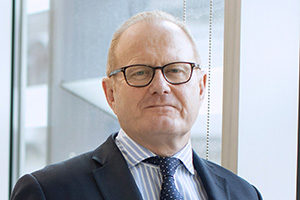
Yes, case prospects, portfolio diversification and pricing are key drivers of the terms that a funder offers to a client, however as the market becomes more sophisticated, spreading single case investments across multiple pools of capital provides an opportunity for funders to provide more efficient terms across a greater number of claims.
One issue the market has traditionally faced has been the provision of capital for riskier or larger investments, and the pricing premiums which are associated with these funding solutions when compared to a more traditional litigation investment. The premiums that funders require for these riskier or larger investments can often mean that funding becomes economically unfeasible as the required return for the funder as a percentage of the estimated recoveries is deemed excessive.
One model some funders have adopted relies on diversification and volume. The objective is to invest in enough meritorious claims to achieve diversification and create a successful portfolio where more cases in the portfolio win than lose. High-level diligence is conducted to assess basic portfolio eligibility, but there is less emphasis on detailed diligence as the objective here is to invest in volume. As a result, this strategy generally delivers relatively high pricing for stronger cases, which could otherwise attract lower pricing with the benefit of detailed diligence and enhanced risk assessment. The drawback of this model is it can prevent funding of claims with leaner economics which would otherwise be funded at lower premiums, as well as leading to clients paying higher premiums than necessary if they do not test the market with other funders.
At the other end of the spectrum is a model which relies heavily on a detailed diligence process to identify lower risk investments which attract lower premiums. This model can have a bias for smaller investments as there is less benefit in investing in high value single cases given the associated concentration risks and lack of diversification where volume is limited. Under this model, fewer investments are made, and greater reliance is placed on the strength of the diligence process to identify strong claims and filter out weaker claims. Claims which require significant investments or carry even medium levels of risk may be declined and drive the client to the higher premium diversification model as described above.
The size of the finance required for some claims is driving some funders to spread the risk across multiple pools of capital. A single funder may operate multiple pools and slice up the capital required across these pools, or multiple funders may syndicate the investment. The benefit to the market is that the universe of claim risk or claim size is deepened, and the benefit for investors is the broader diversification across claims types. Each pool in theory bears less risk, and so under this syndication model lower pricing can be achieved than the simple diversification model described above, even where the same level of diligence is applied.
If clients can achieve better pricing by funding cases across multiple pools, the next question is to establish the role of diligence. Clients are usually motivated to complete diligence as quickly as possible either to avoid delay or the costs associated with detailed diligence. These demands should be balanced against the benefits that detailed diligence may yield in terms of accurately assessing risk and the subsequent assessment of price.
An investment process which benefits from expertise on legal merits, quantum and recoverability can more accurately assess the risks of a claim and result in lower premiums. Investors into dispute finance funds may also demand lower returns based on the quality of the underwriting, and in turn this further cost savings that can be passed to clients. Taking a strong process together with a pooled investment model is therefore more likely to result in lower litigation costs which in turn allows more cases to be funded, and at the most attractive premium.
Consider a commercial arbitration with a claim value of £160m which requires £15m of investment. Under a pure diversification model a funder might require 5X of committed capital plus capital back. On a £15m investment, that represents a return to the funder of £90m. This is likely to result in the investment being declined as the funder would receive over half of the proceeds on resolution.
By contrast, under a model which relies on multiple pools this investment could be split across three pools, each providing £5m of capital, thereby reducing the exposure of each investor. Taken together with a strong and efficient diligence process the same investment might be able to be priced at 3X plus capital back resulting in the funder receiving £60m of a £160m claim. This would ensure that the borrower would receive more than half of the proceeds, which could be the difference between the finance being accepted or not, as well as keeping £30m more on resolution.
In June 2021, Alix Partners and The Lawyer published a joint study with the results of a survey which attracted over 200 responses. That survey found that for in-house counsel – which will usually determine which funding arrangement to use – the most important factor when choosing a funder was overall cost. Funders which utilise models which reduce costs will therefore be in high demand from decision makers, not just as it will ensure more cases can be funded, but because it results in a competitive and compelling cost of funding.
…
For all questions regarding the topics raised in this blog, please contact Louis, Sean or a member of our team of litigation funding experts.